Hello, I'm only making a copy of a post I published on the MSFS forums, but it could be of interest to some people here.
_______________________________________________________________________
I’ve just uncovered a major aerodynamic bug: it appears that the induced drag is wrongly influencing the basic Cd0 parameter.
The SDK states that Cd = Cd0 + k(Cl-Cl0)²
Cd0 is the zero-lift drag component, in other words the basic parasitic drag and k(Cl-Cl0)² is the induced drag component, with k = 1/(PIARe) according to the scientific litterature, AR being the aspect ratio of the wing, and e the Oswald efficiency factor.
Here is the desired Cd0 of 0.0171 set in the flight_model.cfg file:
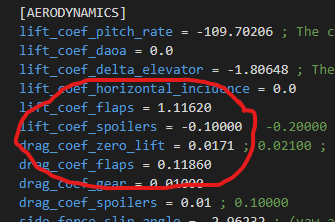
And here is the [FLIGHT_TUNING] section of the flight_model.cfg file:

However, when looking at the numbers in the sim, here is what appears:
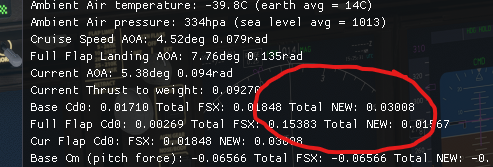

That Cd (Cx is the French notation for Cd) is way too high.
My manually calculated Cd for the conditions would be according to the SDK formula:
Cd = 0.0171 + k x 0.812² = 0,04796 (I voluntarily chose a Cl0 = 0), with k = 1/(PI x 8.46 x 0.804) = 0.04680
The difference between the sim and the manual calculation is huge: 0.07376 - 0.04796 = 0.0258.
After of lot of time, playing with the various parameters, I’ve come to realise that if the induced drag coefficient is set to 0 in the flight_model.cfg, then the correct Cd0 is calculated by the sim:
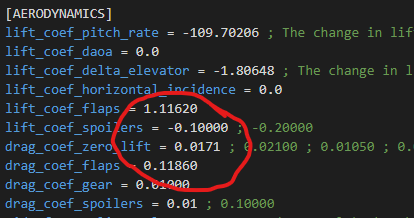
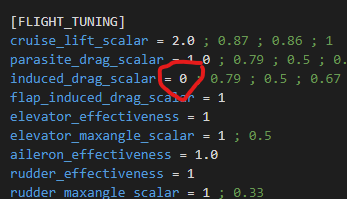
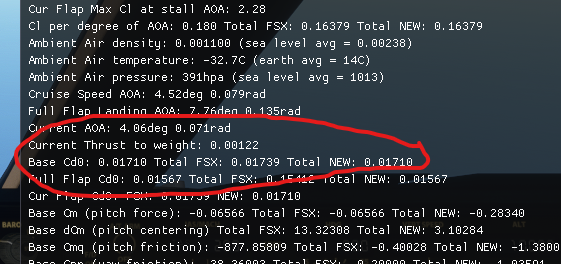
The induced drag shouldn’t have any influence over the Cd0 in the sim, but be added to it as the SDK says it does.
I hope this post was clear, and I hope this will get fixed at the next possible opportunity.
Thank you for reading me!
_______________________________________________________________________
I’ve just uncovered a major aerodynamic bug: it appears that the induced drag is wrongly influencing the basic Cd0 parameter.
The SDK states that Cd = Cd0 + k(Cl-Cl0)²
Cd0 is the zero-lift drag component, in other words the basic parasitic drag and k(Cl-Cl0)² is the induced drag component, with k = 1/(PIARe) according to the scientific litterature, AR being the aspect ratio of the wing, and e the Oswald efficiency factor.
Here is the desired Cd0 of 0.0171 set in the flight_model.cfg file:

And here is the [FLIGHT_TUNING] section of the flight_model.cfg file:

However, when looking at the numbers in the sim, here is what appears:


That Cd (Cx is the French notation for Cd) is way too high.
My manually calculated Cd for the conditions would be according to the SDK formula:
Cd = 0.0171 + k x 0.812² = 0,04796 (I voluntarily chose a Cl0 = 0), with k = 1/(PI x 8.46 x 0.804) = 0.04680
The difference between the sim and the manual calculation is huge: 0.07376 - 0.04796 = 0.0258.
After of lot of time, playing with the various parameters, I’ve come to realise that if the induced drag coefficient is set to 0 in the flight_model.cfg, then the correct Cd0 is calculated by the sim:



The induced drag shouldn’t have any influence over the Cd0 in the sim, but be added to it as the SDK says it does.
I hope this post was clear, and I hope this will get fixed at the next possible opportunity.
Thank you for reading me!




